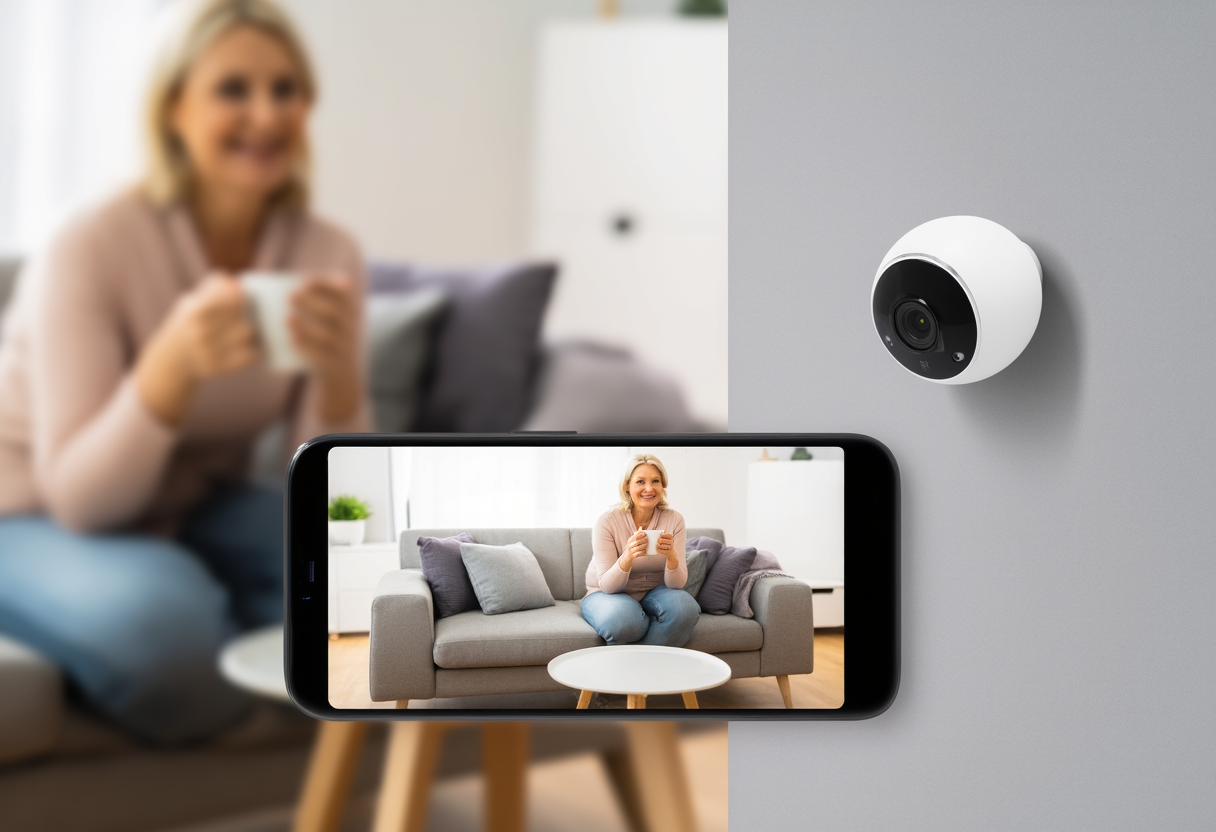The Future of Home Surveillance: How Wireless Security Cameras are Revolutionizing Safety!
Wireless security cameras are transforming how we ensure safety in our homes. These innovative devices offer convenience, advanced features, and connectivity, allowing users to monitor their properties in real-time. The rise in demand for security solutions reflects growing concerns about safety. This article delves into the technology behind wireless cameras, their benefits, and potential future developments.
Introduction to Wireless Security Cameras
Wireless security cameras have become a quintessential part of modern home safety solutions. With advancements in technology, these devices are now more than just optional enhancements; they are crucial for safeguarding our homes. Wireless security cameras offer the flexibility of installation without the need for extensive wiring, making them an attractive option for consumers. Interestingly, the benefits extend beyond simple video monitoring. Features like motion detection, night vision, and mobile alerts provide comprehensive surveillance capabilities that are becoming essential as safety concerns increase. Furthermore, the user-friendly nature of modern wireless security cameras caters to individuals with varying tech savviness, making security accessible to everyone. The integration of artificial intelligence in some models adds another layer, allowing these cameras to distinguish between usual activities and potential threats, enhancing their effectiveness in real-time monitoring. As we explore this topic further, it’s essential to understand not only the technology itself but also the broader implications and trends associated with wireless security cameras.
Technological Advancements Driving Wireless Security Cameras
Technological advancements have played an instrumental role in the evolution of wireless security cameras. The transition from wired setups to wireless systems marks a significant shift in home surveillance technology. Many modern wireless cameras are equipped with high-definition video capabilities, which provide clearer images and footage compared to their predecessors. Additionally, cloud storage options have revolutionized how footage is stored and accessed. Users can now automatically upload and retrieve their security footage globally, enabling peace of mind even when away from home. Another major achievement in this field is the enhancement of wireless connectivity. Many cameras now utilize Wi-Fi, allowing seamless integration with various smart home devices. As connectivity improves, so does the ability to monitor security feeds through mobile applications. This level of accessibility ensures that homeowners are always connected to their security systems, fostering a sense of safety. Moreover, developments in battery technology have made these cameras more reliable and capable of lasting longer without needing frequent recharging.
The Benefits of Using Wireless Security Cameras
The benefits of utilizing wireless security cameras are numerous and multifaceted. First and foremost, these systems provide an unparalleled level of convenience. Unlike traditional cameras, which can require cumbersome wiring, wireless security cameras can be set up quickly and easily in various locations around the home. This allows homeowners to customize their surveillance approach to meet specific needs quickly. Moreover, many wireless security cameras come with built-in two-way audio, enabling homeowners to communicate remotely, whether to greet visitors or deter intruders. Another noteworthy advantage is the cost-effectiveness of these devices. With improved technology, wireless security cameras are becoming increasingly affordable, allowing more people to invest in home security. The combination of lower installation costs and reduced need for professional monitoring services makes these systems a desirable choice for many consumers. Additionally, the ability to integrate cameras with other smart devices expands their functionality, creating a cohesive security system that enhances overall safety.
Social Implications of Increased Surveillance
The rise of wireless security cameras also brings forth various social implications that warrant discussion. As more homes implement surveillance systems, privacy concerns are increasingly prevalent in public discourse. Neighbors may feel uneasy about being monitored constantly, leading to discussions about boundaries and shared spaces. It raises the question of how much surveillance is too much in a society that values privacy. Moreover, while wireless security cameras can help decrease crime rates, they can also give rise to false security perceptions, leading people to become overly reliant on technology for their safety. It is crucial to balance the benefits of surveillance with awareness and education around community safety, personal privacy, and ethical considerations regarding surveillance practices. Societal responses to increased surveillance technology will shape regulations and guidelines around their use.
User Experience and Accessibility
User experience is paramount when it comes to wireless security cameras. Many manufacturers are placing a strong emphasis on designing intuitive user interfaces that make it easy for consumers to navigate their systems. This focus on usability is critical as it allows even less tech-savvy individuals to engage with these products effectively. Integrating features such as voice commands or app notifications significantly enhances the user experience, making real-time monitoring and interaction more seamless. Furthermore, the accessibility of security cameras via mobile devices enables users to have eyes on their homes from anywhere in the world. This universal accessibility is vital, especially for frequent travelers or those who spend long hours away from home. Considering these advantages, manufacturers must continue to innovate and prioritize user experience in future designs to remain competitive in the growing market of wireless security cameras.
Looking Ahead: The Future of Wireless Security Cameras
As we look to the future, the trajectory of wireless security cameras appears promising. Emerging technologies such as artificial intelligence and machine learning are likely to play increasingly significant roles in enhancing their functionality. Predictive analytics could enable cameras to anticipate security breaches before they happen, allowing for proactive intervention. Additionally, the integration of virtual reality may offer new ways for users to interact with their security feeds, leading to enhanced situational awareness. Sustainability and eco-friendliness will also likely be significant factors in the development of future wireless security cameras. As consumers become more environmentally conscious, demand for energy-efficient and sustainably produced devices will rise. Overall, the possibilities are vast as the market continues to evolve, driven by technological innovation and consumer demand for more comprehensive home security solutions.
